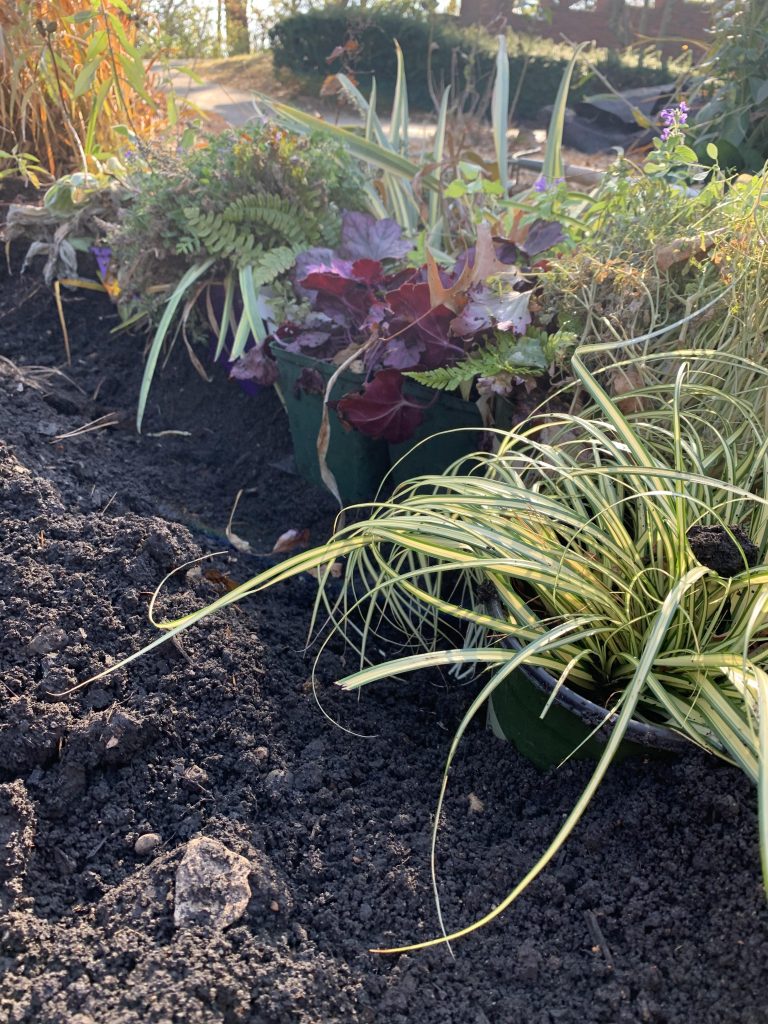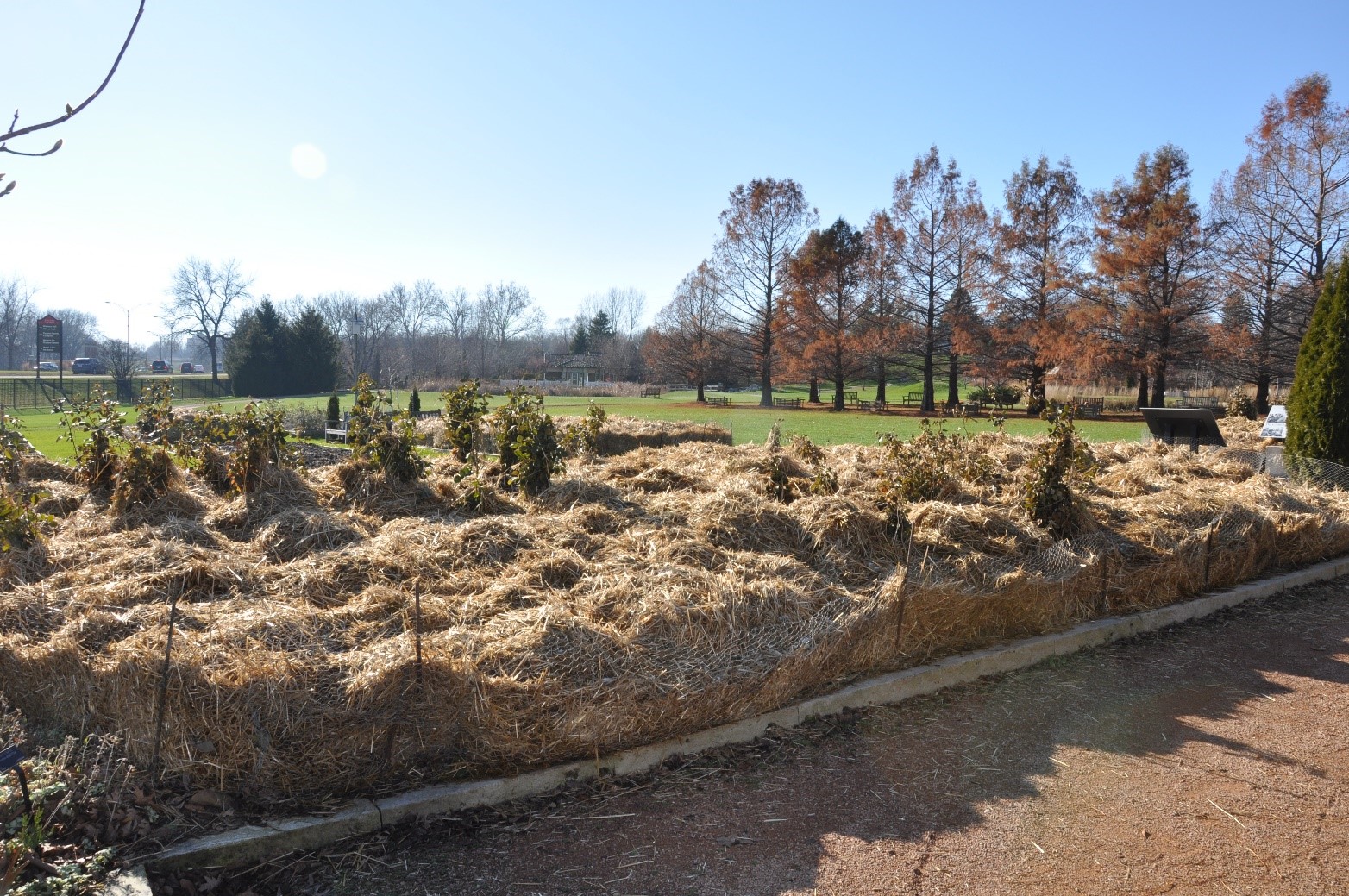As the growing season comes to an end, gardeners face the challenge of preparing some of their tender plants for winter. Horticulture specialists with Iowa State University Extension and Outreach provide practical tips and techniques for overwintering plants not reliably winter hardy in Iowa, ensuring they not only survive but flourish in the seasons to come.
How do I overwinter roses?
Not all roses require winter protection. Many of the roses commonly sold in garden centers, such as Easy Elegance® and Knock Out®, are winter hardy and require no extra care; just prune dead canes in April as the new growth emerges.
However, hybrid tea, grandiflora and floribunda roses do need winter protection due to their vulnerability to cold. Low temperatures and rapid temperature changes in winter can severely injure and sometimes kill unprotected modern roses.
Prepare non-winter hardy roses for winter after the plants have been hardened by exposure to several nights of temperatures in the low to mid-20s. Usually, this is early to mid-November in Iowa. Start by clearing debris and diseased leaves. This will help reduce disease problems next season. Then, loosely tie the canes together with twine to more easily work around and protect the thorny canes. Next, cover the bottom 10 to 12 inches of the canes with soil. Place additional material, such as straw or leaves, over the mound of soil. Use a cylinder of wire fencing to help hold these materials in place.
How do I overwinter butterfly bush and other tender woody plants?
In Iowa, there are several woody plants that are marginally hardy and grown more like perennials. These plants are root hardy in the state, but their above-ground growth is killed over winter in most years.
Plants like butterfly bush, crape myrtle, big leaf hydrangea and some roses will have die-back during the winter. During mild winters, that dieback will be less severe, so leaving all wood in place allows for more of the plant to potentially make it through the winter, giving you a larger plant in spring.
To protect them further, add 2 to 3 feet of light mulch, like straw, around the dormant plants inside a cylinder of wire fencing. Wait until new growth begins to emerge in spring and prune these tender woody plants back to live tissue.
How do I overwinter unplanted perennials, shrubs, and trees?

If you can’t plant a perennial or woody plant before winter, take steps to protect it while still in its container.
Containerized plants shouldn’t be left above ground, as cold can damage their crowns and roots.
The most reliable way to overwinter container-grown perennials is to dig holes in a protected garden area and set the pots in the ground, backfilling with soil as if planting them. Soil is a good insulator and will protect the plant’s roots from extreme cold. This should be done after the plants go dormant but before the ground freezes, usually a few weeks after the first frost. Pull containers out of the soil in spring when the extreme temperatures of winter have passed and the soil thaws.
Containerized plants can also be overwintered by placing them in an attached, unheated garage or other structure with temperatures that can stay consistently between 20 to 45 degrees F. Many unheated structures can vary more widely in temperature than this. It is important to monitor and adjust temperatures inside the structure if needed.
How do I prepare strawberries for winter?
June-bearing strawberries should be mulched in the fall to prevent winter injury to flower buds, crowns and roots. Temperatures below 20 degrees F can harm unmulched plants.
Mulch strawberries after they go fully dormant but before temperatures drop below 20 degrees F. In Iowa, this is typically late October to mid-November in northern portions of the state and mid-to-late November in southern areas.
Use clean, weed-free straw, applying 3 to 5 inches initially. The material should eventually settle to 2 to 4 inches. In windy areas, secure the straw with wire or plastic fencing held down by heavy objects like bricks.
Avoid using leaves as mulch, as they can mat together in layers, trapping air and creating space for ice to form, not providing adequate protection. Leaf mulch may damage plants due to excess moisture trapped under the material.
How do I prepare asparagus for winter?
Asparagus foliage can be cut back to the ground after it has been destroyed by cold temperatures in the fall. However, it’s best to leave it standing over winter. The dead foliage catches snow, which protects the crowns from freeze damage. Remove the foliage in late March or early April before spears emerge.
PHOTO: Overwinter roses (Iowa State University Extension and Outreach)




